
I’ve long been skeptical of the Ford Expedition. Since its launch thirty years ago as a thinly-veiled F-150 wagon, it struck me as a crass way for image-conscious North Americans to spend a whole lot of money pretending they aren’t driving a minivan, and ruining the planet in the process. That’s a bit unfair to the vehicle given its ability to do genuine work like towing the family RV or boat, but my rude impression of the Expedition and the entire Nimitz-class battle wagon fleet remained. It’s hard to deny that they are expensive and inefficient tools for moving kids around suburbia.
I recently rented one, for the same reason as I rented a Malibu: Kyler. We had a long weekend trip booked and it required a box on wheels. Robbed of our 4Runner for the time being, I went looking for a box to rent. We needed volume for four people, their ski gear, and a space for the dog. This is a mission profile for a minivan. The problem was that skiing means snow, most minivans are FWD, and no rental vehicles come with snow tires. I wasn’t going to roll the dice on the weather, and I wasn’t going to risk running out of room renting a midsize SUV (some of those are poorly packaged), so I went whole hog. It’s time to be excessive. It’s time to rent an Expedition.

And I’m glad I did. This thing rocked that trip. It swallowed everything. The passenger space is enormous. The second row captain’s chairs and fold-flat third row resulted in a perfect cargo hold for running 4 pairs of skis longitudinally and easily fitting the luggage with room to spare. The dog could even bed down in the large floor space between the captain’s chairs. This is an annual trip for us, and we use our 4Runner for it and so we’re familiar with how that vehicle handles it. The Toyota has a very large cargo hold for its size and a 40:20:40 rear seat back through which to run the skis. It holds all of this road trip gear, but it doesn’t provide the excess. The excess space. The excess power. The ability to pack sloppily. The Expedition made the trip incredibly easy.

It’s a bit of a low bar to clear. A giant box with a big engine effectively moves some people and stuff? Any brute would’ve done it, and there are a number to choose from. Tahoe/Suburban. Armada. Sequoia. Wagoneer. I don’t have any experience with those. I came to the Expedition as a blank slate. What did I think of it as a cohesive whole?

Let’s start with what this is. Our rental was a 2022 Limited with 61,000 miles on it. It’s a body-on-frame SUV based on the F-150, and it is powered by the 3.5-liter Ecoboost twin turbo V6 and 10-speed automatic transmission. Differences include an independent rear suspension and a part-time push-button AWD system that defaults to RWD but can be locked into AWD or placed in an automatic mode where the computers decide when more grip is needed. There is no low range gearing. It weighs about 5900 pounds. The Limited is a mid-upper trim and seems loaded to me. Leather, heated seats front and aft, memory driver seat position, heated & powered steering wheel, power-adjustable gas and brake pedals, Bang & Olufsen stereo, panoramic sunroof, power tailgate that only intermittently worked properly, and a dedicated second row climate control. The MSRP was roughly $68,000 when new three years ago, $77,000 in today’s money. Buying a similarly-equipped 2025 model would require almost precisely that.

First impressions are lovely. It’s a handsome SUV, particularly from the front, where it avoids the absurd machismo that most of its competitors attempt to inflict on society. The interior appears rich at first glance, particularly in the contrasting color combination of the saddle brown against black. Silver plastic, a small amount of chrome, and some striated faux-wood on the console and dash face add some tasteful variety across the large interior without overdoing it. Nasty scratchable piano black? No sir, not here.

That good impression soon fades a bit when you realize how much hard plastic of unambitious character is being used in high visibility locations on the dashtop and center console. It’s not very nice looking or feeling. The saddle brown leather that is used so effectively on the seats and door panels is emulated on parts of the dashboard, but your eye immediately notices that it is not the same material and not the same quality. The graining doesn’t match, the sheen doesn’t match. It looks a little cheap. This is a pickup truck cabin playing dress-up by tacking a few softer touch panels in strategic locations. Someone will have to let me know if its competitors are any better in that regard since they are the same formula.

Ford nailed other critical interior fundamentals, though. The steering wheel is really nice to hold–the padding is thick, the leather fairly soft and showing no wear after 61,000 rental miles, and the heating elements run 360 degrees around the rim. I found a perfect driving position, which is something I am unable to do in F150s without power adjustable pedals, and the upper seatback of the Expedition doesn’t feel as if it is pushing my shoulders forward into a hunch the way the F-150’s do. The seat is comfortable for a 5-hour drive. Road noise was nearly absent. Wind noise starts becoming noticeable above 75, but not too bad. The gauge cluster is a nice blend of analog tach and speedometer separated by a modern screen. The center screen is large and intuitive, and there is a full array of climate and audio buttons beneath it. Well done. The B&O system audio seems merely decent.

It drives fine for its size but that isn’t saying much. The steering wheel doesn’t feel like it is connected to the front end. The ratio is slow, the assist levels are so high you could twirl the wheel with one finger, it has no real sense of straight-ahead or on-center feel on the freeway and required a bit of attention to keep it from wandering. The 4Runner is not too dissimilar, truthfully, but its hydraulic system at least provides some feel and natural levels of resistance.

The powertrain is another matter. I’ve had a chance to drive F150s with the 2.7 and 3.5 Ecoboosts and the 5.0 Coyote V8. I’ve preferred the driving character of the boosted sixes. They are smooth, loaded with torque, respond quickly to throttle input, and exhibit minimal turbo lag even from a dead stop. There’s power nearly everywhere on the tach, and they’re quiet and refined. The V8, in contrast, requires deep and deliberate nudges of the gas pedal to get much response. It feels lazy to me unless caned. The first time I drove it I thought it had the base 3.3-liter V6 until I noticed the engine note.

The 3.5 Ecoboost in this Expedition only built on my affection for this engine. Here, it is tuned to 400 hp and 480 lb-ft of torque. It steps off cleanly like a normally aspirated engine for the first half second and then the tsunami of torque rolls in. The power is effortless and easily accessible. You can drive it gently and it behaves well because it’s not jumpy. But you can make it outright fly by loading in the throttle. Instrumented tests say this will run neck and neck with my GS350 all the way down the quarter mile, but in everyday driving the slug of torque makes the Expedition feel quicker. It’s a $77,000 vehicle, you say? It feels like it when you’re focusing on the powertrain.

That is the only place where the Expedition feels like $77,000, however. Uh oh, here it comes again: another Petrichor hit job on the domestics! But let me explain. Eighty grand is a lot of money. It’s always been a lot of money and even after the post-COVID inflation bonanza it remains a lot of money. It’s aspirational money. It can nearly get you into an LS500. Or a loaded Audi S6. Or an entry BMW X7. It gets you into a class of automobile where I personally expect certain fundamental attributes beyond horsepower and a long gizmo list.
One of those attributes is for the structure and interior to not sound like an empty box truck whenever I hit a bump or pothole. I already noted the not-quite-premium feel of the interior materials, but that isn’t the big problem. The interior is filled with rattles. The driver’s door panel had a loud internal tapping, while its twin set up shop somewhere near the passenger door. Surround sound! The front panel of the panoramic sunroof was just loose enough to emit a horrible glass-on-metal clackata clack clack! on rougher segments of highway, ruining the otherwise quiet cabin and necessitating a closure of the sunroof shade to partly muffle it. Any number of little shimmies and squeaks and rattles broadcast from all over the rear cabin. I don’t know if it was trim panels, doors jittering in the frame, or the seats, but it was never truly quiet. It never truly felt solid. Independent or not, the rear suspension is stiff and jolts the cabin over bumps, setting all this off even on reasonably well maintained pavement. The Expedition is marketed and used primarily as a premium family hauler but the ride quality and refinement does not match the price.

Some may point to the mileage and rental life, but what of it? Our 4Runner has over 90,000 miles including hundreds of them on dirt road and jeep track, some with bone-rattling washboard for an hour at a time. I’m not exaggerating when I say there isn’t a single persistent or common rattle in that cabin. There may be a lot of hard plastic, but Toyota assembled it with uncommon precision.
The platform and basic hardware are there to make the Expedition capable off road and there’s a Timberline trim to capitalize on that for those interested. But this Limited is a tow/haul rig. Clearances and angles are modest. The running boards and independent rear suspension hang low, and a bizarre carpeted panel mounted below the transmission comes to within inches of the road surface. Aero, I’d guess, as it is far too flimsy to stop anything from hitting the mechanicals above it should the Expedition belly flop onto a rock. It will get ripped right off on your first foray that puts a six-inch high rock or bush in your path. So don’t do it. This is a pavement princess, albeit a muscular one.

Packaging is a crucial metric in a vehicle like this and the Expedition has that part nailed. The second row is an executive suite and even the third row provides enough head room, leg room, and thigh support for a 6-footer. I don’t imagine it gets any better in the segment. The GM and Nissan look similar (and nicer inside) but neither one has that beast of a 3.5-liter twin turbo. The Sequoia’s packaging behind the second row is abysmal, just skip right over that one.
The fuel economy was interesting. I recorded 13 mpg around town. “Boost” is certain. “Eco” is debatable. Nothing makes a 6,000 pound SUV “eco”nomical or “eco”logically responsible.
The EPA highway rating is 22 mpg. You can probably achieve that at 50 or 55 mph, but this is a Western interstate and traffic moves at 80+ (even the Idaho spud trucks) so it’s 18 mpg if you’re lucky enough to not have a headwind. That’s only 1 mpg less than what our 4Runner achieves in the same conditions, which is impressive given the Ford’s extra size and power. Furthermore, that engine appears to be working not at all to maintain speed up moderate grades, without a downshift, in 10th gear. Those turbos just spool faster to quietly feed more air and fuel into a lazily spinning engine and the torque pours forth. No replacement for displacement? Yeah right.

I’m conflicted about this vehicle. I felt a bit of loss when I turned the rental keys in. The absurd quantities of power and volume make this a very easy vehicle to appreciate under the conditions we used it, and it was generally comfortable and quiet. But it’s in a space where it’s priced like a luxury vehicle without really feeling like one. You’re paying for a lot of towing capability and a lot of steel (it costs by the pound, you know), and perhaps as a result you are not getting the solid cohesive build quality and refinement the price suggests you should. That rickety-sounding interior would be unacceptable in an SUV half this price.

I don’t have $77k to spend on a family vehicle so I’m not sure what $77k should look like in this space. Maybe all the competition would get the same reaction from me. But I do know that this price point should elicit a solid twinge of envy and desire, and beyond the engine this really doesn’t. If I wanted to repeat the relaxed and roomy experience of this road trip, I’d save twenty-five thousand dollars and buy a loaded-to-the-gills Honda Odyssey and put snow tires on it. It has all the gravitas of a middle-aged community college economics professor, but it also has the passenger and cargo space of the Expedition with far better road manners, far better fuel economy, a full feature set, and none of the unused body-on-frame truck chassis that drags everything else down. Sometimes it’s hip to be square.



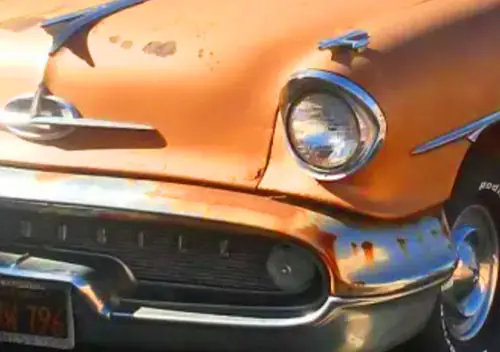
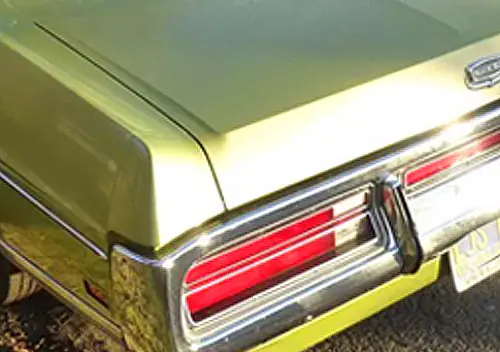


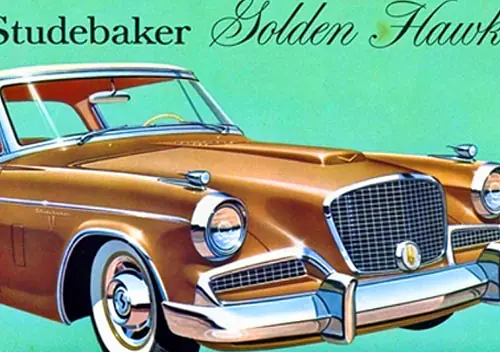
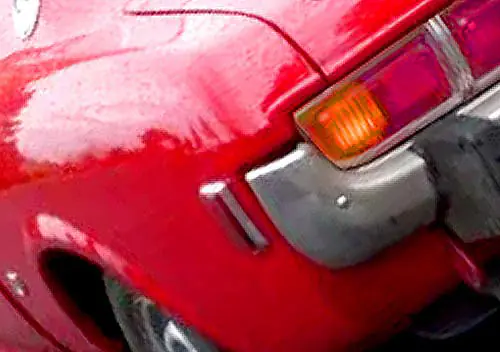

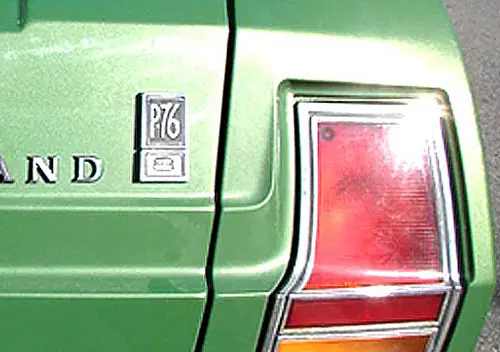
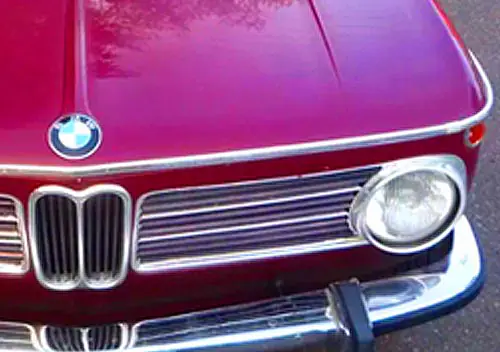
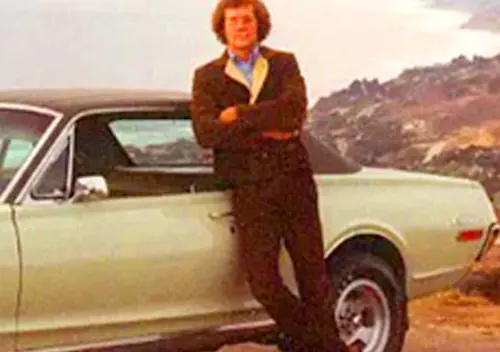

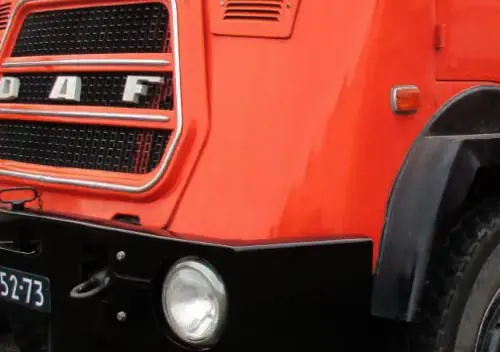
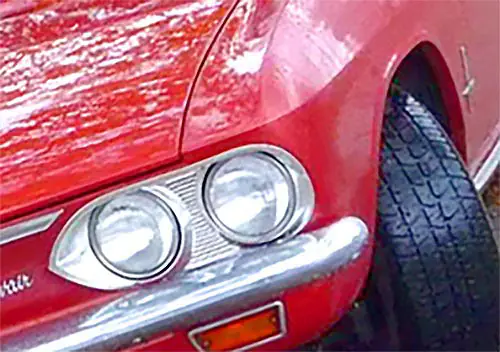
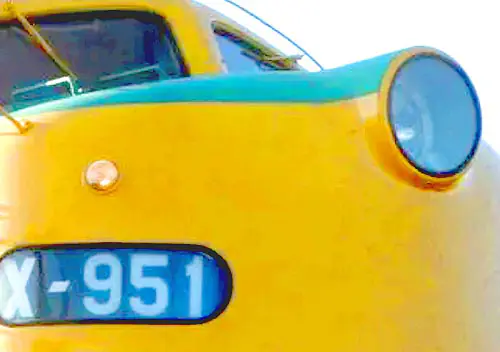

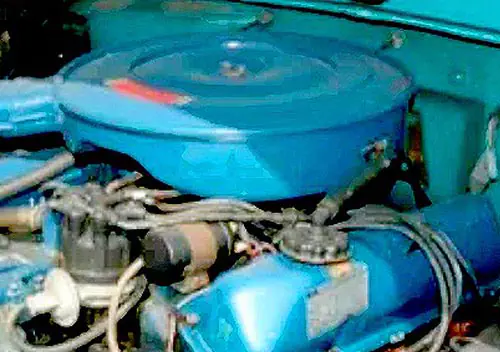
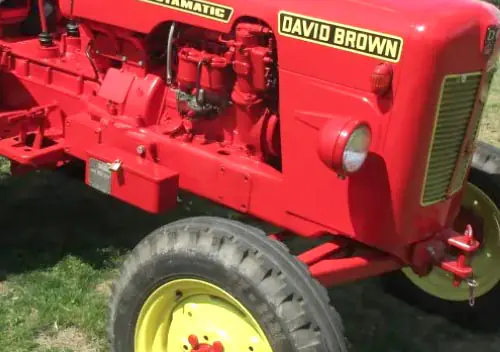


Ha!! 🙂 Indeed. My first thought upon seeing your photo was “Geeze, I could get all of that in my car at half the vehicular footprint.” At which point I should go back to my part time job working at a Japanese cookie factory, since ridiculously arduous jigsaw packaging is my bag.
Great review Petrichor. Your impressions of this whole segment seem very much inline with what I’ve felt the few times I’ve been behind the wheel of something like this. Ridiculous wasteful excess…that can come in handy every so often. But at what cost?
“Just because you can, doesn’t mean you should.” Not a popular sentiment in our culture right now, but one that I’d dearly love to see on the Monroney sticker for every one of these things.
Your wrap up re. the Odyssey is also right on target with my sentiments. Of course, the Millennials who this Expedition is targeted at all grew up riding around for hours every day in such Odysseys…and therefore those are about the last vehicles they’d want to buy now. Not too unlike the station wagon segment that died in previous years.
Ahh, but station wagons are cool now! I for one would luv a ’72 Vista Cruiser, dark blue with white hood striping and 4 on the floor.
I recall renting one of these Expeditions in the late ’90s on a trip from North Jersey to Boston. Navigating traffic in the northeast corridor, finding a place to park it and climbing in and out, I was exhausted and happy to turn in the beast at the trips end. So wasteful too.
The Odyssey, perhaps remarkably, seems to have held on to semi-cool status among my age group. I see a lot of them in my area and it seems like the default choice in what’s left of the segment. They’ve never been “lookers” and certainly aren’t in this generation (unlike the Pacifica), but they aren’t as stodgy as prior Siennas or outright ugly like the current one.
At my age (43), I view the Expedition as a product of my parent’s generation. They became popular at the time when my parents were the age I am now, and so I view them as nearly as dated as the minivan although I may be a minority with that view in my generation
A very good review.
I have contemplated one of these in the those various mental “what if?” scenarios when wondering about a replacement for our 2000 Ford E-150. These are quite similar, yet different. Built on a half-ton Ford chassis, loads of interior space, with better door distribution, a longer hood, and, with four-wheel drive, better in snow.
It would also allow us to continue with our sloppy packing…in fact, it was an issue when we drove the Passat to Florida in November as we are used to the van and are simply out of practice with strategic packing.
But then my mind goes to acquisition price. We paid $5500 for that van in June 2010 (comparable to $8k today); one cannot currently touch a 10 year old Expedition with 90,000 miles for that price. Plus, during our recent car shopping expedition, we found a new Expedition on the Ford lot – for a mere $96k. That’s 50% more than I paid for my first house.
These serve a purpose and do a great job. Yet I have concluded I really don’t have the purpose for one of these to fill. At least at this time.
Indeed, they do serve a purpose and are good at it. Much of that purpose revolves around towing capability and snow traction which, as you note, are very expensive uses to build a vehicle around.
After driving this for awhile I can’t help but believe much of that expense (when new) is the result of enormous profit margins for Ford. AWD is everywhere and a basic steel truck frame that underpins nearly a million F-150s a year probably doesn’t warrant this sticker price either. If I couldn’t put the towing and AWD to work very frequently, it would be a lot of wasted money to me. It doesn’t feel like an expensive vehicle unless you’re working the Ecoboost.
Interesting article, seeing that back in June when my wife, sister-in-law (of my late wife) and I had to go to Orono, ME to bury mom and clean out her estate, it meant renting something big. My Kia minivan is old, beaten, and sister-in-law wouldn’t put up with it’s condition and dynamics (the middle seats haven’t been in it since the day I bought it), so of course I looked to renting a van. Preferably a Chrysler Pacifica Hybrid.
Dream on. The choice came down to a Chevy Tahoe or a Ford Expedition. I took the Tahoe, totally because it was smaller (and slightly cheaper). I’ve always disliked those oversized, over-compensation, machines in the past. Having lived with one over two weeks, I now completely loathe them.
Bottom line: No matter how big, how well equipped, any one of these is completely outclassed by the most basic Chrysler Voyager in both comfort and load capacity. Had I had that minivan, mom’s gorgeous floor clock that I’d always admired would have come home with us. Given what the Tahoe could carry, the clock went on consignment sale.
And the final ‘last nerve’ from the experience. You know how it feels like most people that own those oversized monsters are complete belligerent jerks in traffic? Because they can get away with it due to sheer size and weight? Well, at the end of two weeks of ‘ownership’ I found myself slipping into the same habits that I despise when I’m on the receiving end in my Bolt. All because I was getting used to, “I can get away with it.”
Those two weeks most likely killed off any thoughts of an F-150 Lightning as my next EV.
I agree, these vehicles make it easy to be pushy when driving. You feel secure because the car is huge. It makes so much power and weighs so much that it can literally be somewhat difficult to drive it at low speeds. It’s so isolated and expansive that you often do not realize you’re doing 10 over and come up upon drivers who are obeying the limit.
After a week I hadn’t yet become pushy. But I know for sure I made a spectacle several times launching away from a stoplight in Sport mode. Not because I was impatient, but because feeling a three-ton beast heave itself from a dead stop and hit the 50mph speed limit in such short time was too enjoyable to not try out a few times…despite how it made me look.
Too bad Ford no longer makes the Excursion. Now that was a serious SUV.
Marketplace failure. I’m guessing 3/4-ton crew cabs have filled its niche.
” they do serve a purpose and are good at it. Much of that purpose revolves around towing capability and snow traction…very expensive uses to build a vehicle around”
But when you need it you need it. Try living in snow country 40 miles from Canada and pulling a 22 ft pontoon boat or a 2-horse trailer with a mini-van or A7. Rattles and build?, sure, just add 5 or 10 grand to bring this Ford up to Toyota standards while maintaining it’s size and power, there’s no free lunch. It fits it’s purpose at a reasonable (using judicious selection of options & model) price for those who need the space and capability…some folks do, some folks don’t.
Pretty sure I’ve recognized the “some do some don’t” aspect of it’s utility. Ford is selling 60-80K of these a year and that’s just one model in this class. Perhaps the majority live in snow country 40 miles from Canada and pull pontoon boats and horse trailers. I thought it was sparsely populated up there, but what do I know 🙂
This is the same powertrain as our AWD Transit van, albeit with a different tune and less horsepower. That EcoBoost motor and ten speed transmission are pretty wonderful. Our configuration of the high roof but not-extended length body isn’t that tolerant of sloppy packing when you pack two bikes, a deflated standup paddleboard, dog crate, camping supplies for 2 or 3 months on the road, plus built-in stove, fridge, sink, toilet, heater, 25 gallons fresh water, queen size bed etc. But even loaded up the EB motor just scoots along. No leather or fake wood though, nor heated steering wheel or even heated seats.
Not as luxurious as the Expedition, the Transit handily trumps it by being way more practical. Optioned correctly, between the Promaster, Sprinter, and Transit, the latter seems to be the way to go for a campervan. My preference would actually be for the medium roof version rather than the high one, mainly for the improved aerodynamics/fuel economy.
And if one wants to live dangerously, there’s always the E-Transit with its meager 159 mile EV-range.
We considered a medium roof but making room for bikes under the bed, the extra height was useful for clearance above the bed. And then that extra height translates to a lot of extra volume for cabinets etc. All leading to a higher CG along with the aero drag, not to mention the effect on tree branch clearance, so it is a tradeoff.
The extra underbed ‘garage’ cargo space definitely tilts in favor of the high-roof Transit. I think it was the tallest cargo van until the new Promaster ‘super-high-roof’ was recently introduced. But, then, you also have to deal with Fiat Ducato-based quality.
Regardless, that extra room translates to not having to carry larger cargo (ie., bicycles) on an exterior hitch carrier, which is not an inconsequential feature.
But, then, you also have to deal with Fiat Ducato-based quality.
What objective info or stats about Fiat Ducato quality do you have? Would you like to share that? Or is this just the usual uniformed stereotype-reinforcing throw-away comment?
Are you aware that the Ducato is built by Sevel, a truck company that was created as a JV between Fiat and Peugeot? And that it’s typically been the best selling van in Europe? And that it has an excellent rep there? And that the Ram Promaster is very significantly different that the Ducato? It has a completely different drive train, using the extremely common Pentastar V6 and Chrysler 62TE (now the ZF 9-speed) automatic? And that its suspension, brakes, electronics and many other key systems were specifically designed or modified for the US?
Having owned one since 2017 (and never once been back to a dealer or any shop) and being a regular at the Promaster forum I can assure you that outside of a couple of engine-specific issues (“Pentastar Tick”, fixed some years back) that there are zero weakness/recurring issues with the basic van itself (as conceived by Fiat-Peugeot). It’s a big simple rugged box, has outstanding 4-wheel Brembo brakes and does exactly what it was designed to do. Sure, occasionally issues come up with the van/body, but quite rarely and certainly no more often than with the competition. I am extremely happy with mine so far; zero issues.
The big advantage over the Sprinter and to some extent the Transit? There’s millions of Pentastar V6s out there that can be bought for as little as $1200-1500 in case of a catastrophic engine failure. Same goes for the transmission. Don’t ask what a Mercedes diesel engine or an Eco-Boost V6 and their transmissions will set you back. I plan to keep mine indefinitely; if a major mechanical problem eventually arises they are cheap and relatively easy to fix, thanks to all those millions of other FCA vehicles that use the same engine and transaxle.
Typical rental fleet ride. AT $77k, not going to fly in retail sales when there are other, better-built, big luxury SUV rides. Don’t know how it might fare with the Escalade, but you can bet it will be cross-shopped with that one.
Similarly, when the inevitable big-money starts appearing on the hood (like the other domestic competition), there will be plenty willing to live with the F150 squeaks and groans when the street-price undercuts the class leaders by a healthy margin. It’s been domestic auto marketing SOP for over four decades, now.
I think the Limited is the volume-selling Expedition trim. Lots of retail customers taking it home. They were selling quite well in the restricted post-pandemic market when discounts thinner. Now it looks like $66K is a common enough advertised price for this trim. If someone really wanted I suppose that’s now a good deal. But it’s still $1,000/mo to finance with $13,000 down.
Who has that kind of money?
Maybe a lot of business leases?
It would be interesting to see a sales number comparison between not only the Expedition, Escalade, and Grand Wagoneer, but also their Japanese, German, and British counterparts. It’s definitely a very lucrative market that everyone wants a piece of.
The first generation of Expedition was well known to generate $10+k profits per unit. By now, that’s probably more like $25-35+K, depending on trim level. Yes, these and the F-Series are what are keeping Ford solvent, along with their commercial vehicles, offsetting their massive losses in EVs.
That alone is a bit of a turn-off for me, even if I needed something like this. I just don’t like paying for massive profit margins.
My doctor has more than 3 kids, some of them being tall teens. He bought one of these for his wife, but told me some horror stories about mechanical and electrical issues, way more than someone wants to deal with in this price range. He got rid of it and is completely soured on Ford. He reads here occasionally and maybe he will feel drawn to contribute the ugly details.
I will confess that this class of vehicle has always appealed to me, but I have never pulled the trigger – mainly because of prices I have always considered to be obscene.. Back when the Suburban was the only choice, I could get a really loaded big van for much, much less coin. And I did, which is how I know so much about undisciplined packing.
“this class of vehicle has always appealed to me, but I have never pulled the trigger – mainly because of prices”
My recently-concluded car shopping experience that ended with our Lexus sedan was born from the same appeal and same hesitation. It worked because depreciation is big in this segment and the Lexus is durable enough to have a lot of service life left. I’m not sure the same balance would be found easily in the full size SUV segment.
Your review illustrates why these things are so popular with the folks that can afford them. They just do everything, and that, makes life so much easier and more comfortable. There is a lot of capability there and some buyers need and use all of it. The Expedition can carry six passengers and quite a bit of stuff, it can carry a roof rack or one of those Thule carriers that I see on everything around here. It came within one mpg of your older Four Runner, I’d say that was pretty remarkable. It seems that SUVs are best in the larger sizes, as space efficiency and passenger and cargo volume is best in that size. Midsizers also don’t get appreciably better fuel mileage than the biggies.
I drove minivans for many years, and if passengers and cargo are what you need to carry, they’ve been quite good since stow away seats became available. Forget about towing anything big. I’ve also owned a standard cab F150 for quite a while, it’s very useful and comfortable for two passengers but lacks foul weather load protection. My truck also gets fuel mileage that is better or equal to many smaller trucks. You can buy more basic versions of the Expedition that are quite a bit cheaper and still have most of the features that most drivers want. It sounds like you got an example with really poor build quality, I’ve read that this has also been an issue with the new Explorer when it was introduced. This is unfortunately usually a hit or miss issue, but it shouldn’t be. My old F150 is nothing but hard plastic inside, but is well put together and still very solid and quiet. My 20 year old Navigator was finished beautifully, within the “era” of it’s materials, and it still rides smoothly and quietly, though it’s probably been babied all of it’s life.
I think that when it comes to the balance between power and fuel efficiency in new vehicles, manufacturers should move the bias more towards mileage instead of performance. I would think that there would be room for improvement.
20 year old Navigator:
https://bringatrailer.com/listing/2004-lincoln-navigator-6/
Saw this go by the digital auction block this weekend. I was surprised at how nice the interior materials and general fitment look on this vehicle, given what I remember from the same generation of F-150s.
Ford uses different trim package names on the Expedition vs. the F-150, so it’s a bit hard to compare, but it seems like these aren’t significantly more expensive than the equivalent pickup. If you have a legitimate use case for this (or a Suburban) it’s kind of a bargain.
My problem is with the people who buy these but *don’t* have a legitimate use case for them. But hey, it’s not my money.
Yes, it really comes down to use case for me. If it is frequently towing and employing 4WD, then it’s an essential tool that can be forgiven for feeling overpriced elsewhere. As a near-luxury people hauler it leaves some things to be desired.
I do wonder how much it would cost Ford to just screw the interior together as well as Toyota did in our 4Runner that cost so much less…
Sometimes it’s hip to be square.
That’s the reasoning I’ve used for our last two vehicle purchases – which were minivans, despite the fact that my wife and I really longed for a big SUV. Not that we really need one… just that we’d like the flexibility of driving off-road or towing my in-laws’ trailer. (Oh, my in-laws have an Expedition to tow that trailer.)
But ultimately, we just couldn’t justify the cost. And that’s always irked me because if the Expedition is a thinly-veiled F-150 wagon, then why does it cost so much more than an F-150? So we make do with minivans… which have great passenger & cargo capacity, and that’s really the attribute we need the most.
As for Fords generally, I haven’t been impressed by recent examples. My wife and I had a few 1990s-era Fords, which were great and durable, but those made after 2005 or so seem shoddily put-together. I’ve just known too many people who’ve had bad experiences with recent Fords.
Anyway, thanks for the review – I’m glad to read a real-world test of this car.
You bet, Eric, glad it was useful.
I think the only reason they cost as much as they do is what Paul mentioned above–enormous profit margins that people will either fork out for, and which enable Ford to make money even when deeper discounts are offered.
My 2017 Fiesta ST has 51000 miles on it now, and I agree on the build quality observation. The engineering team hit it out of the park with the driving experience, but the paint, trim, and interior feel as if it is twice the age and 3x the miles. Given the sunroof problem, the bubbling interior chrome, and some flaking shiny black coating on big plastic trim pieces near the roof on this rental Expedition, I’d be hesitant to keep one beyond the first 5 years.
Ford has lots of trim levels for the F150. Starting with base XL work trucks through STX, XLT, Lariat, King Ranch, and Platinum. All available with various add on options. Options like a panoramic sun roof etc. are quite expensive. Of course, everything is frosting on the base truck foundation. I was out looking at new trucks at the Ford dealer last November. Base XL 6.5 ft. bed work trucks are now over 30,000 bucks, almost twice what I paid for my long bed ’07, but they now come with turbo V6s, A/c, power windows, a back up camera, and a few other goodies that my truck lacks.
Although I’ll probably never buy another new vehicle, If I was shopping for a three year old model, I’d probably stick with a low level XLT which would have all the stuff that I would care about. I’ve been thinking about a late model 4WD Explorer with the Four, and that’s the trim level that appeals to me.
I know that a lot of folks buy these trucks and SUVs because they’re trendy and cool looking, but after going back and reading the linked post about the 4Runner, it’s clear that there are always trade offs and compromises, and the buyer should choose carefully to find what will fulfill their needs and desires. You can live more easily with excess capability than with a shortage of capability, though it will cost you more.
A colleague of mine just bought a brand new 2024 expedition, loaded to the gills. He drives about 20,000 miles a year most of those miles just by himself. Within the first month, backing into a tight space in a parking structure and using the backup camera as a guide backed into a cement wall, necessitating $1000 off Insurance trip to the bump shop. He sold his jacked up Jeep Wrangler unlimited to get this. He’s a hockey dad and needs this utility from time to time, and while there is some utility here, it’s a crazy amount of money. I just don’t see how this would be an easy vehicle to live with day and day out driving around town.
Not that I would, but if I was to purchase (and not lease) one of these, the V8 is the smarter choice by far. While the eco-boost twin turbo six might be a technological tour de force there so much going on there technology wise and so much to break, I feel like at around 100,000 miles, bad stuff would start happening.
I think it’s 3.5 Ecoboost or bust on these.
My final thought is that if you need/want a big SUV, used older models make good buys. Especially the simpler V8, models. These can run up really high mileages, and most SUVs aren’t worked as hard as a truck by their first and second owners. You can find lots of older Expeditions, with fairly low miles at around 5 grand, newer ones will be more. Yes, they’ll use a bit more gas, but you’re not paying 1,000 bucks a month on the payment. At those prices, you can keep one around for occasional use to supplement your smaller daily /commuter car. I don’t see what is so hard to drive about these rigs. My F150 is quite a bit longer than my Navigator, and is not a problem. My Nav is even easier to drive as it’s shorter with good visibility.
There’s a V8 prior gen XLT on a used lot I go by frequently for about $20K with 100,000 miles and looks in good shape. Better than spending 65 on a new one.
I didn’t find it hard to drive. Crew cab F150s with the 6.5ft beds start to get irritating, but this wasn’t bad.
Petrichor shared:
“The steering wheel doesn’t feel like it is connected to the
front end. The ratio is slow, the assist levels are so high you
could twirl the wheel with one finger, it has no real sense of
straight-ahead or on-center feel on the freeway and required
a bit of attention to keep it from wandering”
This is downright embarrassing.
It’s 2025, and we can’t build a vehicle – regardless of category – that performs the fundamental task of staying straight on the road?? I’d bet a 1983 factory Bronco, in decent condition and aligned, would track straight with little effort from the driver.
I blame two factors from the last fifteen or so years for this:
#1. EPAS. Or in plain English, electric power steering. Now while it has improved markedly over time, as I indicated in my comments about the 2005 vs 2023 Chevy Malibu, EPS will NEVER have the feel of a good conventional(hydraulic) steering setup. It’s too easy to design in too much assist with electric steering. Maybe if variable assist is adopted across the board, this sentiment will change some.
#2. The purely aesthetic trend toward superwide, low-profile tires on wheels/rims big enough for tractor trailers or smaller commercial airliners(!)
Everyone knows that a higher profile tire – narrower with more sidewall, tends to self-correct, and travel in a straight line, more readily than will a wider lower profile package.
Those wider, hyper-steering-input-responsive things have one place on the road: underneath a sports coupe. Not on family sedans, crossovers, utilities, or pickup trucks.
So until or a combination of the following happens, complaints such as the above will continue to mount:
A. Decrease, progressively, the amount of electric power steering assist with speed
and/or
B. Return to sane wheel & tire aspect ratios (70-series or higher)
and/or
C. Increase angles considerably of the self-aligning angles: Caster, SAI, etc. if low profile tires are to remain the standard offering.
Interesting review. Thank you.
I remember looking at a Chevrolet Suburban at the Harrisburg Auto Show in 2019. It had a sticker price of $77,000. This was before the pandemic, so high prices for this class of vehicle aren’t anything new.
The GM siblings have generally been the class leaders, but I’m hearing stories of serious engine issues at low mileage. Our daughter’s soccer coach owns a GMC Yukon that just experienced complete transmission failure at 100,000 miles. The vehicle was not abused (and not used for towing). Both of these issues are surprising, as the drivetrains in the GM entries have enjoyed a good reputation.
With the Expedition, I’ve seen too many older models with serious corrosion bubbles on the tailgate and hood. That makes me wonder if the same thing is in store for the new models.
The GM 6.2 liter V8 is currently having a moment:
https://www.hagerty.com/media/news/nhtsa-probe-gm-l87-v8-failure/
The only person I know with this engine (a MY2020 or so) required over $4000 of work to the top end of the engine (lifters?) at 80,000 mostly highway commute miles. You’d think a long-serving big GM V8 engine would be reliable at this point, but they managed to do something to it in recent years.
Thanks for the post. As always, I appreciate the time you and the others invest in CC. Great responses, too.
We too rented a ’22 Expedition. It was a Limited Max edition. The rental agency over-rented the Pacifica’s we were supposed to get, so off we went in the Exp. The extra space was an advantage for us as we, in addition to the usual luggage, also carried two mobility devices.
Not surprising, it drove much like the two late model F150’s I’ve driven. Maybe a bit more stable with the weight over the rear wheels. Certainly fine with day-to-day chores and bussing. Although, after a couple weeks, I did look forward to getting back in my sporty sedan.
Not a fan of turbos especially in truck and SUV applications. I would’ve preferred the Coyote 5.0 V8, but learned they were discontinued in the Expedition after 2014. Why they’re still available in pickups is curious. Wonder if it’s based on type of use.
But turbos are fun as I found out with this 3.5.
We spent most of the time shuffling people to and fro. One time I was alone and feeling a little frisky so decided to punch the pedal and whoa this sucker had some torque and power! Right around 2,500-3,000 rpm, this engine comes alive. I later learned Ford has three different versions of the Ecoboost they put in the Expedition. The version we drove had 400 ponies.
All in all the two weeks spent with the Expedition were good. I can say Ford has made a big, heavy vehicle handle and brake about as well as possible.
I would’ve liked to have tested a similarly equipped GM Tahoe or Suburban. Another time.
Keep up the good work!
My husband and I rented a ’22 Limited in June ’24. It had 40k miles on the odometer which had me worried before we departed. We drove 2,500 miles in one week. Loved the comfort and space. So easy to drive even though it’s big. Zero problems. It influenced us to buy a new ’24 (Platinum).